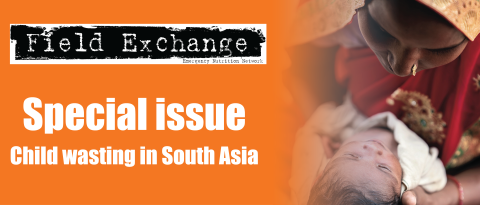Early childhood linear growth failure in low- and middle-income countries
Research snapshot1
Stunting affects approximately 149 million children under five years old globally.2 However, estimates rely on cross-sectional surveys, which offer only limited information on growth failure trajectory, persistence and timing of onset. Such survey data also masks the dynamics of linear growth and potential reversal of linear growth failure. Information on the age of onset and its persistence offers insights on when and how to intervene with preventative measures. In this study the authors analysed 31 longitudinal cohorts from 15 low- and middle-income countries in South Asia, sub-Saharan Africa and Latin America (62,993 children, aged 0-24 months) to estimate age-specific incidence and prevalence of stunting, linear growth velocity and reversal of linear growth failure.
Across cohorts, 12% of children were stunted at birth and 17% experienced incident stunting onset between birth and three months of age. Stunted children between birth and three months accounted for 40% of all children who experienced stunting by age 24 months. Between 0 and 15 months of age, less than 5% of children reversed their stunting status per month. In children who were able to reverse stunting, relapse was common. Overall, improvements to length-for-age z-scores among children who had shown stunting reversal were neither sustained nor large enough to eliminate linear growth deficits.
These findings highlight the importance of preventive interventions; particularly in the prenatal and postnatal stage. Interventions to improve maternal nutrition, reduce adolescent pregnancies and reduce prenatal infections may reduce the risk of linear growth failure. Additionally, more focus should be placed on postnatal interventions. However, interventions to improve exclusive breastfeeding rates and complementary feeding practices have to date shown only limited impact on child linear growth and a paucity of effective postnatal interventions to improve stunting rates remains. The authors conclude that actions to identify alternative interventions (potentially multisector in nature) and improve the quality of current interventions within the first 1,000 days of life are essential.
1 Benjamin-Chung, J., et al. (2020). Early childhood linear growth failure in low- and middle-income countries. medRxiv: 2020.2006.2009.20127001. www.medrxiv.org/content/10.1101/2020.06.09.20127001v1
2 Based on old estimates, from World Health Organization Joint child malnutrition estimates – Levels and trends (2019 edition). www.who.int/nutgrowthdb/estimates2018/en/ (2019). More recent estimates are available in the 2020 edition (144 million children globally are stunted).


